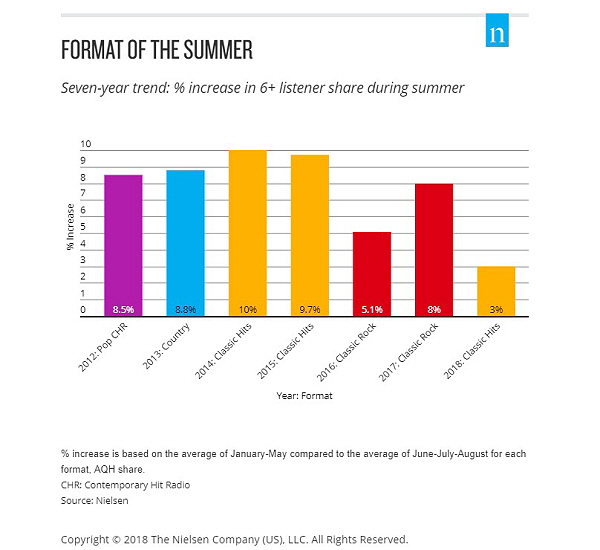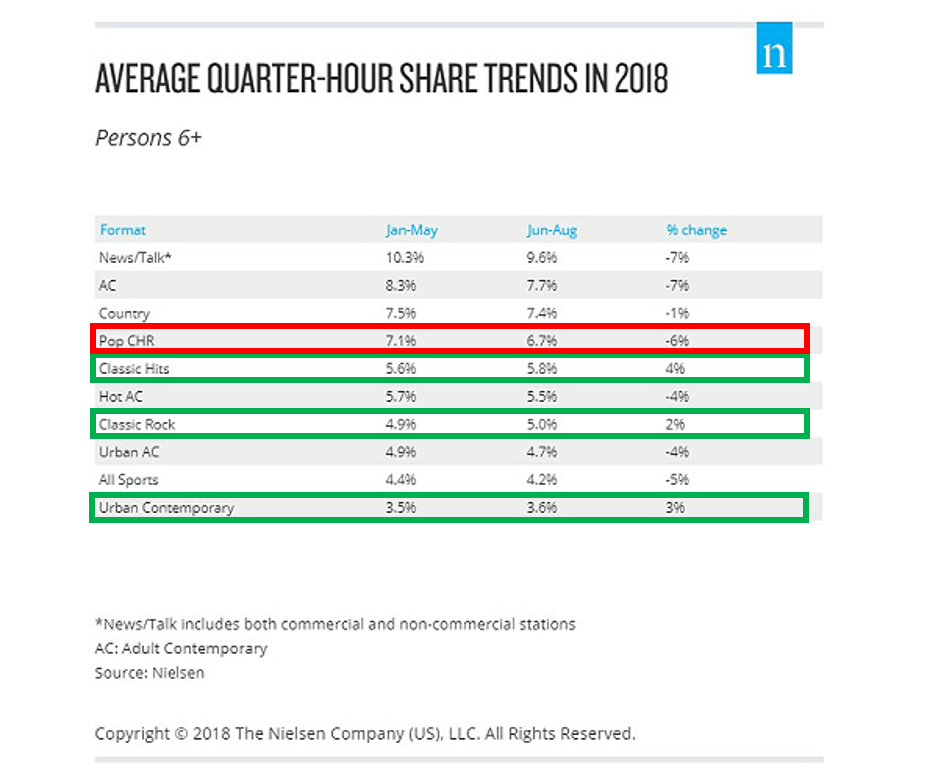
I’m not a music analyst, but I’ve conducted enough music research over the years to have a pretty good handle on how songs affect listener emotions. In actuality, standard music testing – callout, auditorium tests, dial tests – don’t always give you the full measure of a song’s impact.
Yes, they’ll give you scores that measure popularity, fit, and fatigue. What they don’t tell you is how songs make people feel. As pure-plays like Spotify have proved in recent years, listening to music is emotional and situational. That’s why so many people name playlists for activities (“working out”), time of day (“morning smoothies”), and mood (“chill”) rather than genre.
Yet in radio, we’re all about genre – often pigeon-holing people into convenient, familiar groupings, like Alternative, Top 40, and Country. As we’ve learned especially since the advent of the iPod, most people’s tastes are more diverse. They often enjoy music that runs the spectrum, rather than occupying narrow radio format categories.
And mood, time of day, the weather, and other emotional factors drive music preference and tastes. Here’s a true story from back in the day when I used to moderate auditorium music tests. These tests are almost always conducted in the early evening hours to make it convenient for workers. A respondent came up to me at the end of the night, enthusiastic about the 600+ hooks he had evaluated. He explained how much he enjoyed the test, but then served up this caveat:
“You know, had this test taken place in the morning, I would have rated most of these songs differently.”
As a researcher, this is about the worst thing you can hear – because, of course, he was right. Songs hit you differently by time of day, situation, and circumstance.
That’s also true by season.
The time of year, often driven by weather (and that’s market to market), holidays, vacations, and other conditions play a role in how we feel and respond to the music we select and hear – on our playlists and on the radio.
The summer is a special time of year for most of us. If you live in the midwest or east, it’s a time when convertible tops go down, grills roll out, and flip-flops become standard footwear. And that means the soundtrack of the summer needs to reflect that vibe.
I know I’m dating myself, but I cannot think of a group that typified summer more than the Beach Boys. Yes, they also symbolized the Southern California spirit of cars, surfing, and girls. But no band captured that summer spirit better than these guys. When you heard one of their songs in the middle of summer, it just felt right. And when you heard one in the dead of winter, it might you feel hopeful the sun would shine again.
This is “Fun, Fun, Fun” from a live performance in March ’64, just as Beatlemania was lifting off. It captures the essence of a fun, summertime band.
Fast-forward to the summer of 2018. An article written by music critic Craig Jenkins in Vulture asked this key question:
“Why are the songs of summer so sad?”
Jenkins refers to 2018 as “the year of the sad song,” pointing to hits such as Drake’s “In My Feeling,” Juice WRLD’s “Lucid Dreams,” Post Malone’s “Better Now,” and Ariana Grande’s “No Tears Left To Cry” as symbolic of the angst, anxiety, loss, and darkness that pervade our lives. Perfect for the summertime, right?
The aforementioned are all charting hits, and probably tested very well for the thousands of radio stations across genres that played them this summer.
And that raises an important question:
Do tempo, energy, fun, and positive vibes have anything to do with ratings?
Apparently, so. Nielsen just released its wrap-up of this past summer by format, and we’re now looking at a pretty consistent, reliable, and even predictable 5-year trend. From 2014-2018, Classic Hits and Classic Rock have ruled in the summer months:

And as Nielsen points out, both Classic Rock and Classic Hits (along with Urban Contemporary) were the only formats that actually grew during this past summer Note that CHR was a format that experienced a sizable drop, down 6% during the same period.

And that brings us back to the Craig Jenkins’ theory. Did an apparent glut of sad, depressing, angsty songs conspire to hold CHR down this summer?
Conversely, did the sounds of Katrina & the Waves, Bryan Adams, and Hall & Oates on Classic Hits stations, along with the Steve Miller Band, Led Zeppelin, and AC/DC on Classic Rock stations simply out-tempo these other formats for the fifth consecutive summer?
Or is it perhaps bigger than that. Have the familiar, multi-generation songs that typify these two formats become synonymous with good times and great summers – whether you’re 25 or 55?
I’ll leave the hardcore analysis to the true musicologists – Alan Cross, Sean Ross, Guy Zapoleon – three of the smartest observers of music and its impact. They may each conclude I’m off a mile.
I do know this. Watching a video like Juice WRLD’s Top 10 charting hit from the summer may not have the same downer effect of say, “Dust In The Wind” or the hippie hopefulness of “Imagine.” But it’s not an uplifting, positive, happy song. By the way, the lyrics are NSFW.
CHR stations are pretty much obligated to play the hits of the moment – even if they’re not happy or inspiring. On the other hand, Classic Rock and Classic Hits stations have the option to “rest” downtempo songs – even if they test well – for the warm weather months. And many do.
While the weather is still warm, jump in the car, turn up the radio, and see which format delivers on the end of summer promise.
My money’s on Queen, Michael Jackson, and ZZ Top.
- What To Do If Your Radio Station Goes Through A Midlife Crisis - April 25, 2025
- A 2020 Lesson?It Could All Be Gone In A Flash - April 24, 2025
- How AI Can Give Radio Personalities More…PERSONALITY - April 23, 2025




Spot on Fred. My mantra all year has been the recipe is more important than the ingredients.
Bob, well said. Thanks, good one.